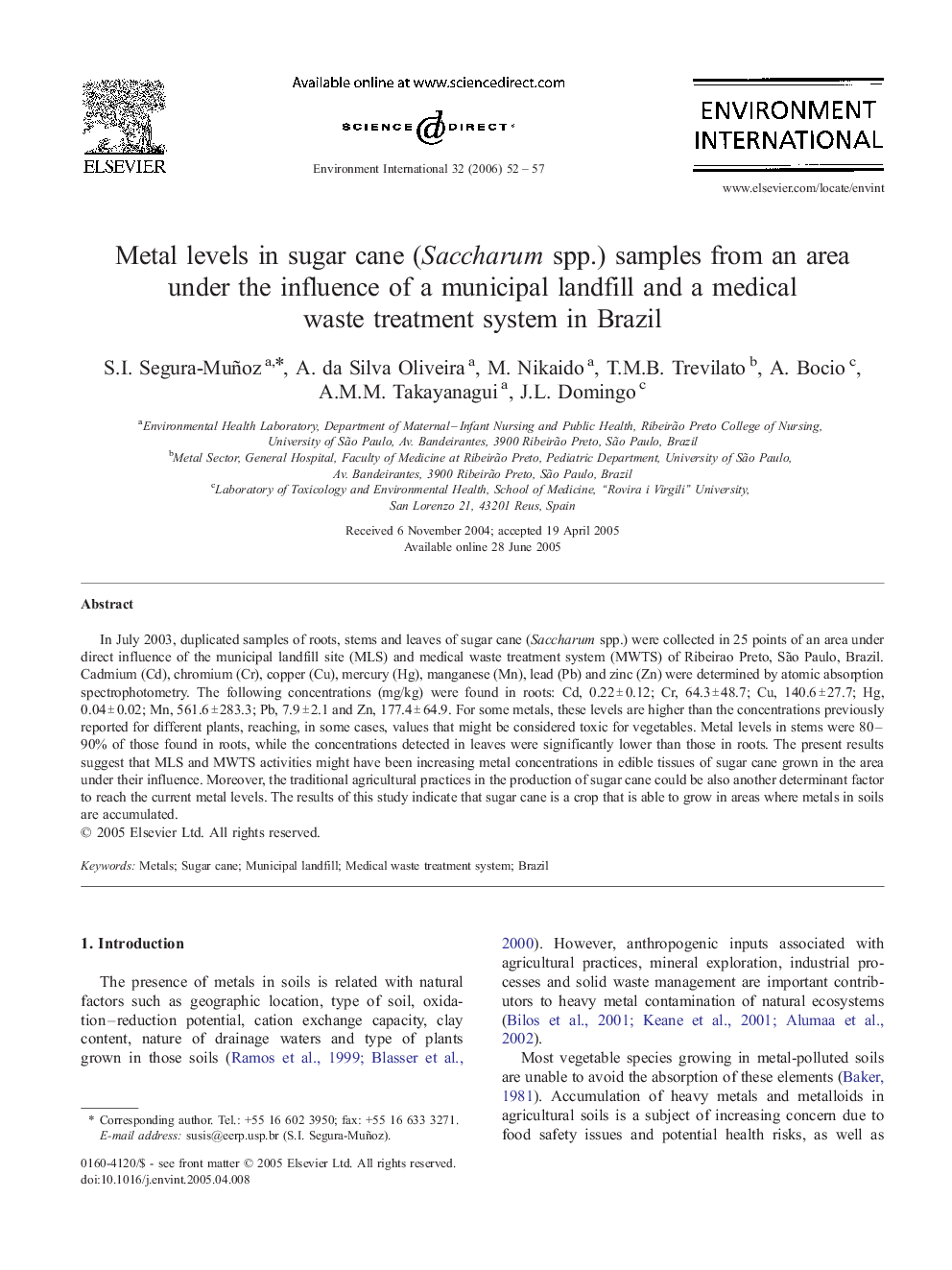| Article ID | Journal | Published Year | Pages | File Type |
|---|---|---|---|---|
| 4424139 | Environment International | 2006 | 6 Pages |
In July 2003, duplicated samples of roots, stems and leaves of sugar cane (Saccharum spp.) were collected in 25 points of an area under direct influence of the municipal landfill site (MLS) and medical waste treatment system (MWTS) of Ribeirao Preto, São Paulo, Brazil. Cadmium (Cd), chromium (Cr), copper (Cu), mercury (Hg), manganese (Mn), lead (Pb) and zinc (Zn) were determined by atomic absorption spectrophotometry. The following concentrations (mg/kg) were found in roots: Cd, 0.22 ± 0.12; Cr, 64.3 ± 48.7; Cu, 140.6 ± 27.7; Hg, 0.04 ± 0.02; Mn, 561.6 ± 283.3; Pb, 7.9 ± 2.1 and Zn, 177.4 ± 64.9. For some metals, these levels are higher than the concentrations previously reported for different plants, reaching, in some cases, values that might be considered toxic for vegetables. Metal levels in stems were 80–90% of those found in roots, while the concentrations detected in leaves were significantly lower than those in roots. The present results suggest that MLS and MWTS activities might have been increasing metal concentrations in edible tissues of sugar cane grown in the area under their influence. Moreover, the traditional agricultural practices in the production of sugar cane could be also another determinant factor to reach the current metal levels. The results of this study indicate that sugar cane is a crop that is able to grow in areas where metals in soils are accumulated.
